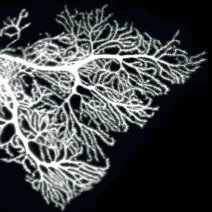NMDARs in granule cells contribute to parallel fiber-Purkinje cell synaptic plasticity and motor learning
M Schonewille, A E Girasole, P Rostaing, C Mailhes-Hamon, A Ayon, A B Nelson, A Triller, M Casado, C I De Zeeuw, G Bouvier
Authors :
Martijn Schonewille, Allison E Girasole, Philippe Rostaing, Caroline Mailhes-Hamon, Annick Ayon, Alexandra B Nelson, Antoine Triller, Mariano Casado, Chris I De Zeeuw, Guy Bouvier
Abstract
Long-term synaptic plasticity is believed to be the cellular substrate of learning and memory. Synaptic plasticity rules are defined by the specific complement of receptors at the synapse and the associated downstream signaling mechanisms. In young rodents, at the cerebellar synapse between granule cells (GC) and Purkinje cells (PC), bidirectional plasticity is shaped by the balance between transcellular nitric oxide (NO) driven by presynaptic N-methyl-D-aspartate receptor (NMDAR) activation and postsynaptic calcium dynamics. However, the role and the location of NMDAR activation in these pathways is still debated in mature animals. Here, we show in adult rodents that NMDARs are present and functional in presynaptic terminals where their activation triggers NO signaling. In addition, we find that selective genetic deletion of presynaptic, but not postsynaptic, NMDARs prevents synaptic plasticity at parallel fiber-PC (PF-PC) synapses. Consistent with this finding, the selective deletion of GC NMDARs affects adaptation of the vestibulo-ocular reflex. Thus, NMDARs presynaptic to PCs are required for bidirectional synaptic plasticity and cerebellar motor learning.
Keywords : Purkinje cells ; cerebellum ; motor learning ; nitric oxide ; pre-NMDARs.
Proc Natl Acad Sci USA. 2021 Sep 14 ;118(37) doi : 10.1073/pnas.2102635118


